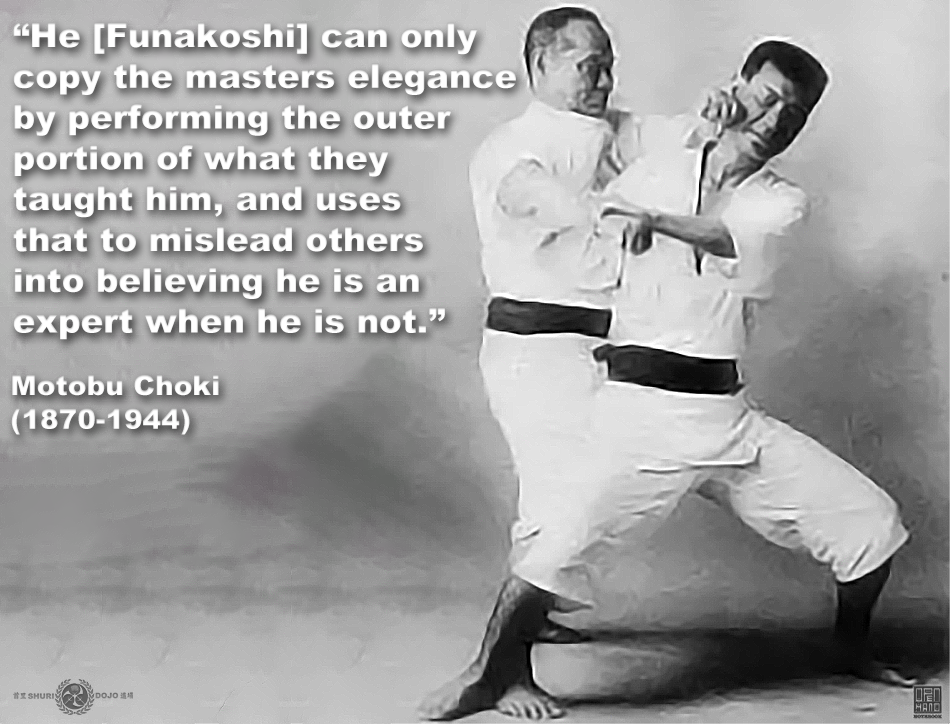
In many dojo throughout the world you will see instructors and students moving up and down the dojo (social media too), moving backwards and forwards practicing block, punch, block, punch, in some sort of ‘renzoku’, ‘ippon’ or ‘sanbon’ kumite etc.
.
Everyone must learn the basics to become proficient in any of the martial arts. The basics have to be repeated over and over….. But those basics must be realistic. Don’t they?
.
If your view of the martial arts is for self-protection and not in any kind of sporting context, then your training must be realistic and not based on modern competitive rules.
.
Karate was never intended to be geared towards gaining a belt or competition, but on understanding, effectiveness and development. The movements contained within karate were never meant to receive an attack from another martial artist, and this is perhaps one reason why many interpretations of applications or set ‘kumite’ are woefully ineffective.
.
In the majority of set kumite, the techniques used to begin an attack are not following a likely civilian attack….. karate was not created for this.
.
Moving backwards and forwards blocking and punching, learning these kumite practices by rote, doesn’t allow for a deeper understanding.
.
Rote memory allows for the memorization of basic information, but it doesn’t put that information into any sort of context. The lack of context for complex subjects means that the student has not learned anything in depth about what they are studying.
.
Yes, you must repeat the movements of karate over and over to gain any kind of mastery, but if these repeated movements simply give the wrong information, then you are just repeating wrong information.
.
To truly learn something, you must have the right context, otherwise the movements that you are memorizing are just movements. They do not represent true knowledge.
.
‘Meaningful learning’ is a learning strategy that gives deeper meaning to concepts and subject matter. Studies have found that the more meaning that is given to information, the more likely it is that you will remember that information long term, and in turn it becomes more useful. The “why” in the movements as well as the “how”.
.
The “why” isn’t simply that you’re “blocking a punch” etc. This does not allow a student to go beyond the set techniques, and the success of any of these techniques are dependent upon having a predetermined knowledge of the attack. This doesn’t exist in the real world.
.
If you take a single movement, take away the label, there is a near limitless number of ways you can adapt, vary and explore that movement. Unfortunately, most practitioners follow the rote system of learning, therefore anything other than a defined attack (eg Oi zuki), against a defined defense (eg Jodan age uke), then the technique fails.
.
Instructors should always teach the effective meaning of a technique, not just block and punch (which often it isn’t anyway).
.
Most practitioners today do not have to face real violence, which will be unscripted and random. Any engagement practice (kumite) which is pragmatic in nature, should include many variations in technique and movement, using varying levels of resistance. The set kumite does not follow this principle.
.
Essentially learning ‘punch – block – punch’ is developing the skills needed to win against a single unarmed opponent in a consensual exchange with predetermined knowledge of the karate-on-karate attack. The performance of the exchange becomes confused with the content or the method. ….. it’s not in any way based in reality.![]()
![]()
.
.
